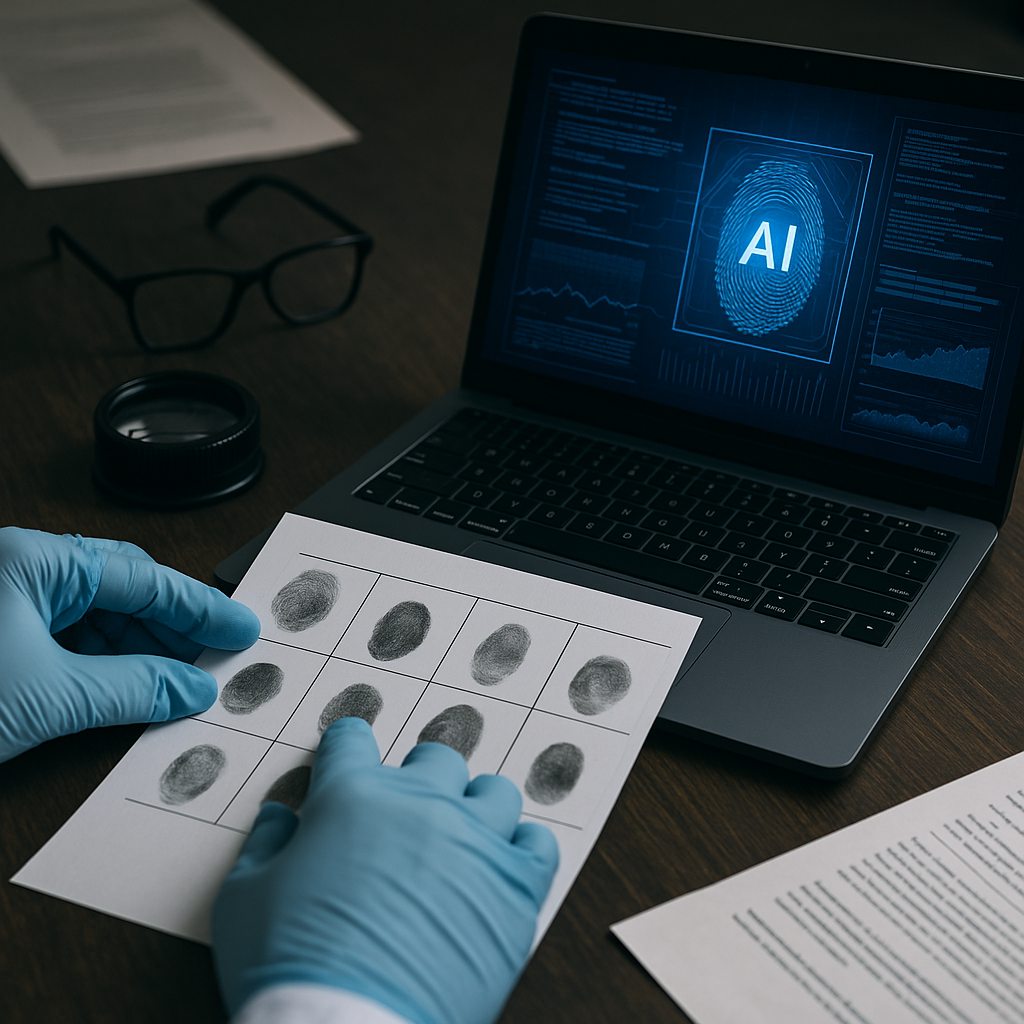AI integration in criminal justice raises ethical and legal questions about evidence admissibility
The forensic process is moving away from tangible, observable evidence toward what he calls “invisible evidence”, algorithmically produced inferences without physical form. This transformation, while offering new investigative power, also introduces critical challenges concerning transparency, accountability, and the validity of algorithmic reasoning in the courtroom.

The integration of artificial intelligence (AI) into criminal justice systems is not only redefining the role of forensic experts but also raising ethical and legal questions, according to a new paper published in Forensic Science.
Titled "Integrating AI Systems in Criminal Justice: The Forensic Expert as a Corridor Between Algorithms and Courtroom Evidence," the study explores how predictive AI models used in forensic fingerprint analysis are not only influencing investigative outcomes but also redefining expertise, accountability, and legal admissibility in modern justice systems.
AI in forensics: From pattern matching to probabilistic inference
The research traces a major transition in forensic fingerprint analysis, from human-led physical matching of minutiae points to algorithmic inference powered by AI and machine learning. Traditional forensic systems rely on the Automated Fingerprint Identification System (AFIS), where experts manually compare ridge characteristics to confirm a match or exclusion. the author contrasts this model with an AI-based predictive workflow, which uses convolutional neural networks, deep learning, and ensemble classifiers to infer demographic traits such as gender, hand laterality, height range, and ancestry from partial or low-quality fingermarks.
In a simulated burglary scenario, the author compares the two workflows. The traditional AFIS method failed to produce an identification when tested against the national fingerprint database. The AI-enhanced model, however, inferred a demographic profile, identifying a male subject between 175 and 185 centimeters tall, of North African or European ancestry, and likely using the right-hand middle finger. These predictions helped narrow down potential suspects and led to a simulated arrest within 48 hours of analysis. The comparison underscores that AI-driven demographic inference can generate actionable investigative leads even when physical fingerprint matching fails.
The author stresses that this shift from discrete pattern recognition to probabilistic modeling represents a profound change in forensic epistemology. The forensic process is moving away from tangible, observable evidence toward what he calls "invisible evidence", algorithmically produced inferences without physical form. This transformation, while offering new investigative power, also introduces critical challenges concerning transparency, accountability, and the validity of algorithmic reasoning in the courtroom.
The forensic expert as an epistemic corridor
The author argues that AI integration does not diminish the need for forensic experts; rather, it transforms their role. The expert's function evolves from interpreting physical evidence to mediating between complex algorithmic systems and the legal standards governing admissibility. The forensic expert becomes an epistemic corridor - a mediator responsible for validating AI outputs, translating probabilistic data into legally intelligible conclusions, and ensuring that computational findings meet the strict evidentiary thresholds of accuracy, transparency, and reproducibility.
This transformation also demands new forms of expertise. Forensic professionals must now master skills in bias detection, statistical validation, model explainability, and AI ethics alongside their traditional pattern-recognition training. the author notes that in AI-augmented workflows, experts must verify model performance, audit algorithmic reliability, and ensure interpretability before evidence can be presented in court. Their duty extends beyond analysis, they must evaluate model bias, confirm audit trails, and articulate probabilistic findings in terms understandable to judges, jurors, and defense attorneys.
The study warns that without this expert mediation, AI outputs could be misinterpreted as objective truth rather than probabilistic inference. Machine-generated results often lack visual anchors and intuitive explanations, which poses a risk of overreliance by courts seeking definitive conclusions. The framework positions the expert as a necessary safeguard, bridging technical complexity and judicial reasoning to preserve the integrity of the legal process.
Under this redefined role, forensic experts must also uphold adversarial readiness by disclosing algorithmic design, validation data, and potential sources of bias. This ensures that opposing counsel can challenge or scrutinize AI-derived evidence. The author likens this to historical developments in fingerprint testimony, where experts had to justify their methods and error rates under cross-examination. AI evidence, he argues, must be equally contestable, with no reliance on proprietary secrecy or black-box claims.
Ethical, legal, and policy implications for justice systems
The study raises broader questions about how legal systems can adapt to the emergence of algorithmic evidence under established admissibility frameworks such as Daubert and Frye. These legal standards require scientific evidence to be testable, peer-reviewed, and accompanied by known error rates. AI systems, by contrast, often operate as opaque neural networks that lack clear mechanisms for replication or audit. The paper argues that without rigorous validation, AI-based tools risk exclusion from legal proceedings or, worse, could introduce systemic bias into judicial decision-making.
The ethical dimension of AI in forensics is equally significant. Algorithmic models trained on biased or incomplete datasets may perpetuate historical inequities in criminal profiling. The study draws parallels between contemporary AI-driven classification and Cesare Lombroso's discredited 19th-century physiognomic theories, which attempted to infer criminality from physical features. Both approaches, the author warns, risk confusing statistical correlation with causation and could unintentionally reinforce discriminatory patterns in law enforcement and sentencing.
To address these risks, the study proposes a framework for responsible AI integration in forensic science built around three pillars: validation, transparency, and training. He calls for standardized protocols to evaluate algorithmic performance under realistic case conditions, cross-laboratory benchmarking to ensure reproducibility, and public reporting of accuracy and bias metrics. Moreover, forensic practitioners should receive comprehensive training in data-science literacy, ethical auditing, and adversarial testing to prepare them for AI-augmented workflows.
At the institutional level, the study advocates for transdisciplinary oversight bodies composed of forensic scientists, legal scholars, ethicists, and technologists. These organizations would review AI deployment in criminal investigations, set admissibility standards, and ensure compliance with privacy and fairness principles. Such governance structures, the author argues, are critical for building public trust and ensuring that AI tools enhance justice rather than undermine it.
- FIRST PUBLISHED IN:
- Devdiscourse









